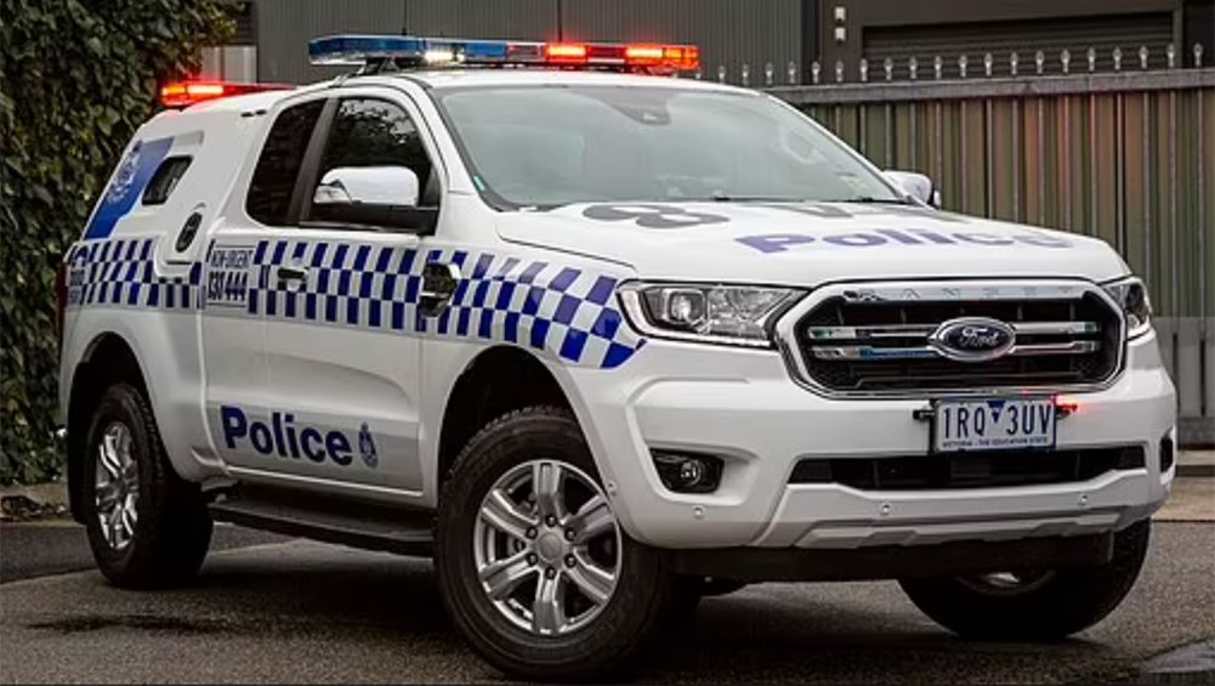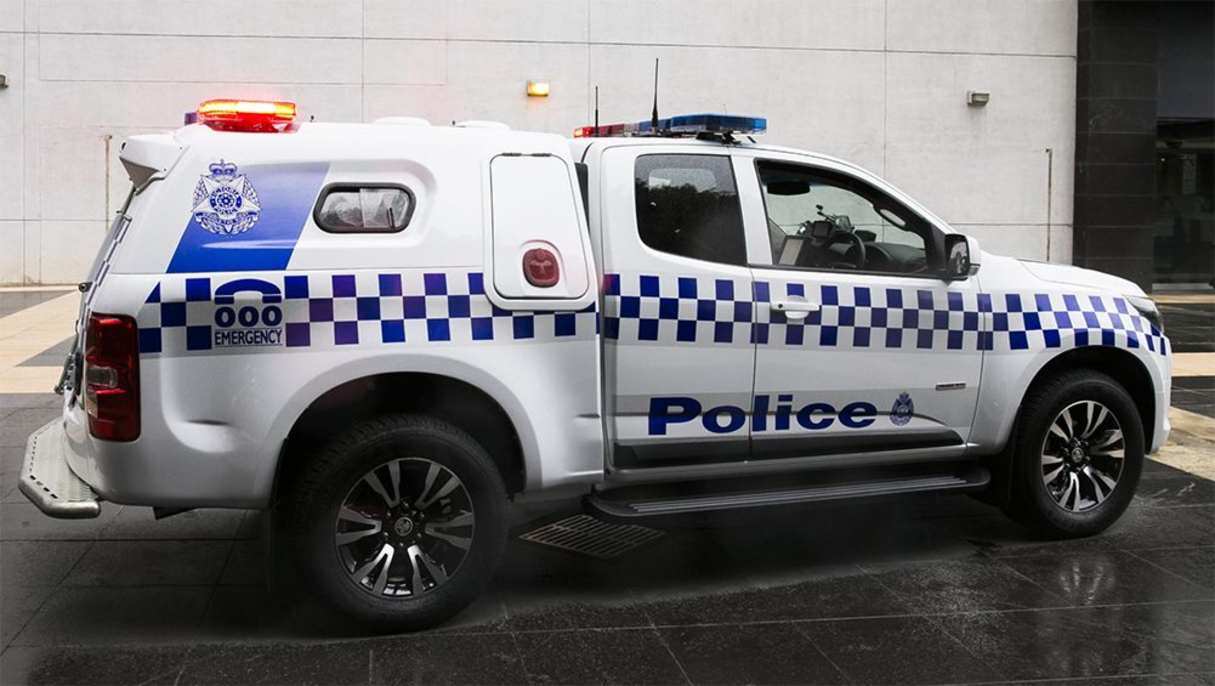The good old police divisional (or ‘divvy’) van has evolved yet again with the help of Ford Australia.
Introduced late last year as part of a rollout process involving 250 vehicles that is expected to take two years, the latest iteration is based on the current Ranger.
Developed specifically for Victoria Police by vehicle modifiers Centaur Products and Motherson Lumen in conjunction with Ford’s Special Vehicle Engineering (SVE) team based in Broadmeadows, Melbourne, the changes include a different prisoner pod with climate control, easier entry/egress, substantially increased storage (which meant tail lights could be positioned in the same position as the standard Ranger – enabling BLIS, Reverse Brake Assist and other systems to work as intended), better lighting, and improved monitoring and communication equipment from within the passenger compartment.
Additionally, every vehicle is fitted with a bullbar regardless of location. Along with housing specific light bars, the bullbar counterweight the additional mass of the pod for greater stability, reduce vehicle damage and cuts downtime following collisions with animals.
Using the mid-range XLT specification and fitted with the standard 154kW/500Nm 2.0-litre bi-turbo four-cylinder diesel engine, they will over time supplant the old-shape Ranger XLT equivalents that have been in service with Victoria Police since 2021. Vehicles are retired from duty after three years or 90,000km.
Achieving the 2023 five-star ANCAP safety rating helped the Ford get over the line, aided by the ute’s broad driver-assist safety tech such as autonomous emergency braking, blind-spot alert and lane-keep assist, as well as surround-view cameras and lighting to help boost security around the vehicle.
It seems the roughly 280 previous-gen Rangers supplied to Victoria Police were a trial run to see how the locally-designed and developed ute would hold up as law-enforcement vehicles. This followed on from the 290 Holden Colorado divvy vans that had been delivered across the state starting from 2018.

Christine Wagner, Ford Australia General Manager for Fleet and Upfitting, revealed it was a case of getting in early, listening intently and be willing to improve the product.
“With the divisional van that was done for Victoria Police, we actually worked with their modifier to design a better “prisoner pod” for their requirements,” she told CarsGuide recently.
“That design was done in conjunction with us. Our SVE team created wiring looms and so on. If you have a look inside one, it is (specially modified and fit for purpose) from an electrical requirements consideration… with their own air-conditioning into the pod, communication equipment that includes cameras and audio, as well as within the (main cabin) itself with its own special communication requirements like any other vehicle police vehicle does.
“Our interviews (with Victoria Police) were intimately close (to improve the product). In my team, I have a specialist manager, is a technical lead, who also specialises in the emergency services area, and he works with the fire authorities and the police authorities, to help create the right solutions for their needs. In the case of the divvy van prison pod vehicle, he worked very closely with Victoria Police, he introduced the SVE team to them and said ‘let’s work together on this’, he was involved in the first PX III, and involved in the second one.

“And that’s the stream of work we are seeking to do. I can’t speak for them, but my guess is that, when they get that quality of service, it shows our commitment to their end-use case, and their needs, and it’s our view that the more we can get involved in supporting those end-use cases, and appreciated and really understanding and viscerally really getting in touch with them, the more we can affect that, the better we can serve those customers.”
Wagner believes that Ranger’s position as the world’s only new Australian-designed and engineered vehicle helps create a vehicle that’s better suited for police duty.
“It’s a unique proposition,” she said. “Not a lot of OEMs have access to a SVE team that is absolutely grounded in the DNA of their base vehicle, because they’re all developed in other parts of the world… it’s a matter of leveraging everything we’ve got at our disposal.”
So, how did Ford become involved in this level of vehicle modification?

Wagner said that Ford Australia watched and learned from Ford Europe's example with its commercial vehicles, such as the Transit Custom, where suppliers and selected fleet customers became involved early on in the development story to ensure the vehicles like Ranger could be better-adapted to varying customisation requirements. This in turn improves the end-customer experience and also mitigates warranty issues through the creation of better solutions.
“(Ford in Europe) started some 10 to 12 years ago with the concept called “Qualified Vehicle Modifiers”, where they identified that Transit is modified in various ways by various different modifiers to make it fit for purpose,” she explained. “Chassis Cabs would have cranes and boxes put on them; vans would have all sorts of different sorts of racking systems put into them; vans used in emergency services would have a completely different array of equipment put onto them.
“And Ford Europe took the initiative to start to engage closer with the modifiers, to try to give them early information up front about CAD information of upcoming models, so that when the modifier industry were presented with the new Transit, they were ready to go, to make them fit for purpose. And so we’ve taken that initiative for Ranger, and we’ve started it as an engineering program, with our SVE team and they have developed relationships with between 30 and 40 modifiers in Australia, and they range from people who make service bodies… that do big conversions on the back of Ranger chassis cabs, and they’re fabricated ones. They’re literally making bodies out of fibreglass and alloys and other materials, and are fitting them with unique tool boxes for anything from the mining industry to civil to construction to whatever the case is.

“And those body builds are a significant portion (of our business)... in the Ranger’s case, we took the opportunity to be brought in early; they were exposed to the car before it was launched… to assist them to design things for this vehicle.”
Wagner said Ford’s mindset has evolved dramatically since the old days of dealer-fitted or aftermarket accessories sufficing
“It’s not enough to just sell a car to a large fleet customer and stop there. There’s a real requirement to back it up with a whole lot of other services. In the past, if you go back to Falcon and Territory days, it was enough to whack on a set of headlight covers, potentially a cargo barrier and a tow bar on the back of a Falcon ute, and that was it. And they were fit for purpose.
"These days for Ranger, that’s far from where we are. We’ve moved well into this space where the end customer – through a variety of (different programs), we are involved in the chain right to the end."





.jpg)
.jpg)
.jpg)

_0.jpg)



.jpg)
 (1).jpg)




.jpg)


.jpg)
.jpg)





